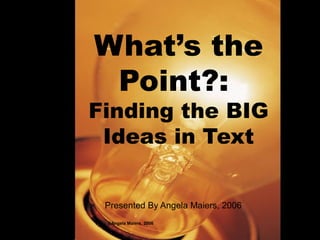The document discusses finding the main ideas in texts. It defines main idea and theme, and describes the specific steps readers should take to identify the main ideas, such as previewing text features. It also notes that students often struggle with finding main ideas. The Harvard Report details a study showing that most college freshmen did not effectively read to understand the main points. Effective reading requires skills like having a purpose and focusing on key details. The document provides lessons for teaching students to identify stated and implied main ideas through understanding text structure and composition.





























